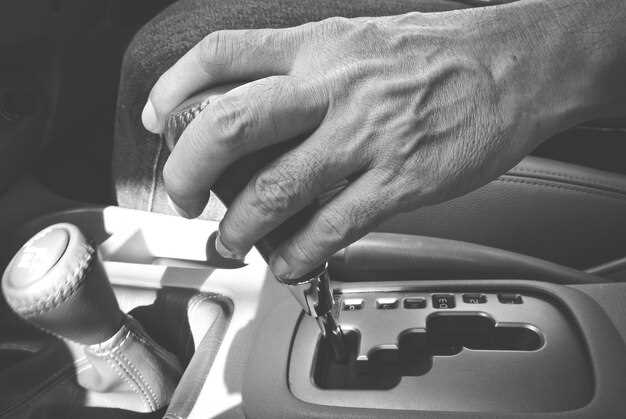
How to Extend the Life of Your Car’s Transmission
- Arthur Rodriquez
- 0
- Posted on

The transmission is a crucial component of any vehicle, responsible for transferring power from the engine to the wheels. Proper maintenance of your transmission is essential to ensure its longevity and optimal performance. Many car owners, however, overlook this vital system, leading to costly repairs and potential vehicle breakdowns. In this article, we will explore practical tips to help you prolong the lifespan of your car’s transmission through effective maintenance.
Understanding the factors that can affect your transmission’s health is the first step towards proper maintenance. Common issues include overheating, low fluid levels, and neglecting regular inspections. By addressing these issues early on, you can prevent major damage and save both time and money. Let’s delve into specific strategies that can keep your transmission running smoothly for years to come.
Regular Fluid Changes and Quality Selection
One of the most crucial aspects of maintenance for your car’s transmission is ensuring regular fluid changes. Transmission fluid plays a vital role in lubricating the moving parts, providing necessary hydraulic pressure, and facilitating cooling. Over time, this fluid can degrade, losing its effectiveness and potentially leading to costly repairs.
It is recommended to follow the manufacturer’s guidelines regarding fluid change intervals, which can vary based on the vehicle and driving conditions. Generally, performing fluid changes every 30,000 to 60,000 miles is advisable, though more frequent changes may be needed if you often tow heavy loads or drive in extreme conditions.
Choosing high-quality transmission fluid is equally important. Not all fluids are created equal; using the manufacturer’s specified fluid ensures compatibility and performance. Brands that meet or exceed industry standards can help maintain optimal transmission function. Investing in premium fluids can provide better protection for gears and reduce wear, extending the overall lifespan of the transmission.
In summary, regular fluid changes combined with quality selection are essential practices in maintaining your car’s transmission. Prioritizing these simple yet effective steps can prevent major breakdowns and ensure smoother operation for years to come.
Monitoring Driving Habits to Reduce Strain

Driving habits play a crucial role in the overall health of your car’s transmission. By becoming more aware of how you drive, you can significantly reduce wear and tear, leading to a longer lifespan for your transmission. One of the most effective ways to achieve this is by avoiding sudden starts and stops. Smooth acceleration and gentle braking help maintain a steady flow of power through the transmission, decreasing the strain placed on its components.
Another important aspect is the use of cruise control during long drives. This feature not only enhances fuel efficiency but also minimizes frequent gear shifts, which can cause excessive heat buildup in the transmission. Maintaining a consistent speed helps the transmission operate more efficiently, thus prolonging its lifespan.
Additionally, be mindful of load and towing limits. Overloading your vehicle can lead to increased stress on the transmission, especially when navigating steep inclines or during heavy acceleration. Always adhere to the manufacturer’s specifications regarding weight limits to ensure that the transmission operates within safe parameters.
Regular maintenance checks are also essential. Keeping fluids at the proper levels and ensuring they are clean can help prevent overheating and corrosion. Schedule routine inspections to identify potential issues early on, which can save you from costly repairs and extend the life of your transmission.
Finally, consider the type of environment where you drive. Frequent stop-and-go traffic can place extra strain on the transmission. If you often drive in heavy traffic, make adjustments to your driving style, such as planning ahead to reduce abrupt braking or accelerating. By being attentive to your driving habits, you can significantly reduce strain on your car’s transmission and ensure its long-term performance.
Routine Inspections for Early Issue Detection

Regular inspections of your vehicle’s transmission are essential for identifying potential issues before they escalate into larger, more expensive problems. By conducting routine checks, you can ensure that your transmission operates smoothly and efficiently over time.
Start by examining the transmission fluid level and condition. Low or dirty fluid can indicate leaks or contamination, which may lead to transmission failure. Check the color and smell of the fluid; it should be a bright red and have a neutral odor. If it appears dark or has a burnt smell, it’s time for a change.
During routine inspections, also pay attention to any unusual noises or feelings while driving. If you notice grinding, slipping, or unusual vibrations, these may signal underlying issues with the transmission. Addressing these symptoms early can prevent costly repairs down the road.
Additionally, monitor the transmission cooling system. Overheating can severely damage your transmission. Ensure that the cooling lines are free of leaks and that the radiator is functioning properly. Regularly cleaning or replacing the transmission filter can also improve performance and longevity.
Lastly, consider having a professional evaluate your transmission periodically. Their expertise can help identify problems that might not be obvious during self-inspections. Regular maintenance, combined with these inspections, can significantly extend the lifespan of your transmission and enhance your vehicle’s overall performance.